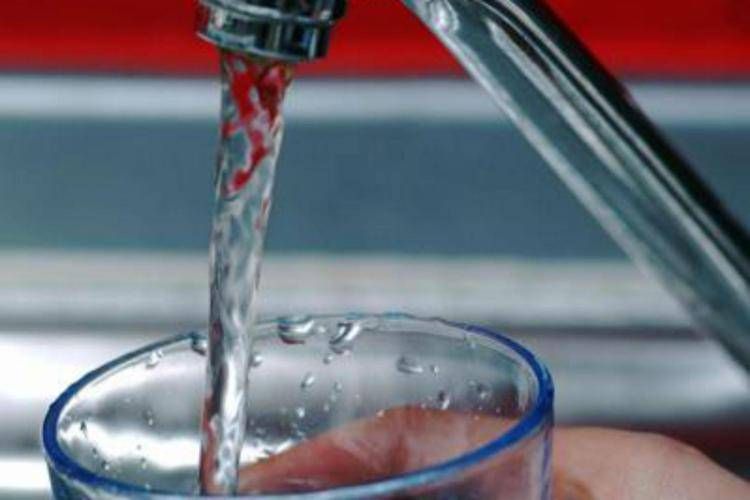Espoo wants to keep boats out of the shoreline in winter, but boaters are opposed to expensive and cumbersome inland transport.
Is again, it’s time to lift the boat to the winter rolls to wait for next spring.
For the time being, it is easy to visit Suomenoja in Espoo.
The car lifts the boat out of the water, drives it to the stand and lowers it.
“The thing is over in half an hour, I would estimate,” says the resident of Espoo Kari Vainio, a sailor and a member of the Espoo Boating Association Meritie ry.
Very for many years this ease may not be enjoyed.
Suomenoja’s boaters will be able to work in the familiar harbor for some years, but it is likely that the winter storage of boats at Suomenoja will be stopped or significantly reduced at the end of the 2020s.
No political decision has yet been taken.
However, Espoo’s plans in the area are clear: the most significant new residential area along the western metro will be zoned for the seashore. Finno’s metro station has been built to serve a lavish new residential area and its 17,000 new residents.
Read more: Espoo is planning to build a lush artificial island: “There are no easy-to-live seaside destinations on the west side”
So boaters have to give up, but for what? It is still unclear.
Until a few years ago, Espoo agreed with boaters on two replacement winter storage locations: Skatanniitys on Svinö Island in the summer archipelago and the Kurttila Brick Factory Pier. The locations were agreed in joint negotiations between the boaters and the city, in which Vainio was also involved.
Last spring, however, the Espoo City Government issued an appeal to develop the Skatanniitty of the Summer Archipelago into a detached house area.
Vainio has been involved in co-operation between the city and boaters in considering solutions for winter storage.
Read more: Espoo wants a detached house area in the Suvisaaristo – The area is intended as a allotment garden
Boats there are other solutions for winter storage. One of them is a storage area for boats and motorhomes and caravans in Ämmäsmäki, near the former landfill area.
There is a lot of space there, praises the project manager of the Espoo urban environment Kimmo Leivo.
A Ämmäsmäki winter storage site for boats, caravans and motorhomes has been built on top of the old landfill in Ämmässuo.
Attempts have been made to attract boaters to the area, for example, at very low storage prices.
“So far, both the current ports and Ämmäsmäki have had really low prices when compared to private companies. We have been able to enjoy really low prices, ”says Leivo.
About boaters only part has seized the offer. Ämmäsmäki would accommodate about 800 boats, but the area is used for winter storage by only a few hundred boaters.
There are a total of 2,394 winter storage places in Espoo, but the majority, ie 1,500, are located in Suomenoja.
If Suomenoja’s winter storage ceases almost completely and some hundreds of winter storage places are available in the Brickyard area, about 500 places will still have to be found somewhere.
Espoo has a total of 10 marinas and 2,400 berths.
In Ämmässo, that place is hardly there, boaters say. It is, they say, too far inland.
The wooden boat fence was raised on winter rollers at Suomenoja at the end of September.
According to Vainio, transporting a small boat to Ämmässuo is relatively inexpensive and easy, as it follows a passenger car with a light trailer.
Instead, transporting an already medium-sized boat is challenging and expensive. According to Vainio, this is quite a traffic and environmental nuisance.
Vainio’s sailboat is close to medium in size: ten meters long and weighs six tons. Transporting it inland is complicated and expensive.
The largest boats still need a convoy to warn of wide or long transports.
Field estimates that the cost of transport could rise by some boaters to around a thousand euros and beyond over the season. It already approximates the amount a sailboat swallows throughout the season, as fuel costs are low. Transportation could double the price of the hobby.
“If hundreds of boats have to be transported 20 kilometers from the lifting site, then it’s a shocking operation, and the cost will triple or quadruple.”
Some additional storage space will be provided by enhancing the existing space, Leino estimates.
One part of the solution could be for those willing to keep their boat completely elsewhere, for example in Raseborg.
According to Leivo, there are both moorings and companies with services in the area.
“Would be the last leg [matkaosuus] Impossible in Raseborg if you have been boating there all summer anyway? ” Bread asks.
According to Vainio, the problem is not one extra link to Raseborg, but the constant Travel to the boat. The boat fleet is on average old and requires maintenance and refurbishment. If the trip to the boat is long, purchasing services will raise costs drastically.
“If the solution is to take it to Inkoo or further afield, then boating may only become a hobby for the wealthy.”
In front there may still be a bitter battle for space.
Boaters are already disappointed in the city, Vainio says. This is due to the fact that the jointly agreed winter storage of Skatanniity has not been adhered to in the city.
“Computationally, we will lack 500 winter storage places near the beach in the future. We are angry about this. It feels like we have been deceived. ”
The situation is partly due to the fact that the winter storage sites were negotiated by Espoo’s official management, but the final decisions are made by politicians.
That’s where land used in Espoo is a politicized issue.
It is difficult to find land on the shoreline of the Helsinki metropolitan area that would not be suitable for housing construction. Therefore, according to Leivo, no easy solution is promised.
The guidelines are likely to emerge only after a political twist.
“Every beach town has the same problem. As the population grows, then the quiet tarpaulin village has to be moved to something to enable housing production, ”says Leivo.
From the city’s perspective, of course, it is a waste to consider the shoreline near the subway station as a storage area for half a year.
Leivo sees significant opportunities in the Finno area.
“A person who lives by the sea and near the subway could be a good taxpayer. In the end, it is a question of value choices, ”Leivo concludes.
“Do we want good taxpayers or good winter storage places for boats?”
.






